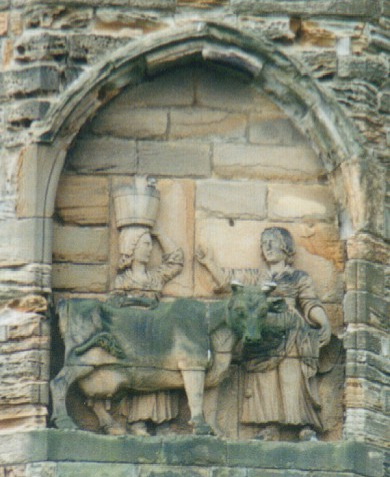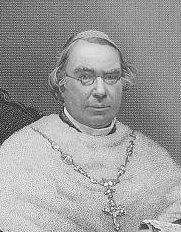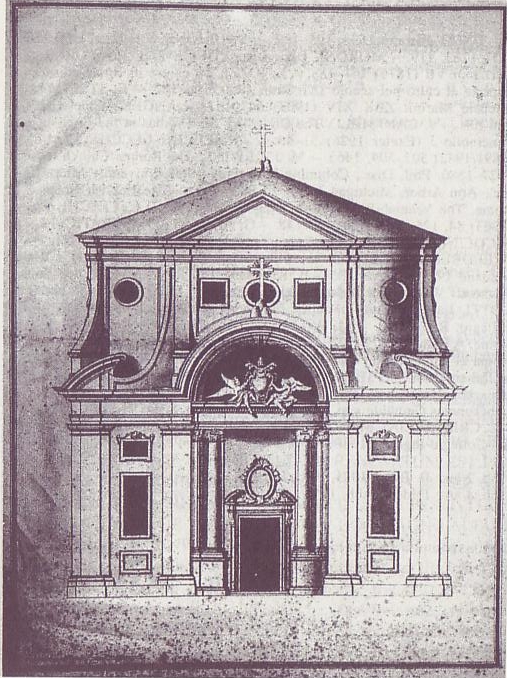|
Nicholas Wiseman
Nicholas Patrick Stephen Wiseman (3 August 1802 – 15 February 1865) was an English Roman Catholic prelate who served as the first Archbishop of Westminster upon the re-establishment of the Roman Catholic hierarchy in England and Wales in 1850. He was made a cardinal in 1850. Born in Seville to Irish parents, Wiseman was educated at a school in Waterford before attending St. Cuthbert's College at Ushaw. From there he went to the English College in Rome, where he subsequently became Rector. While in Rome, he was assigned to preach to the English Catholics there. As Rector, he was the representative of the English bishops. During a visit to England in 1836, he helped initiate the periodical '' Dublin Review''. In 1840, he was appointed president of Oscott College. Early life Wiseman was born in Seville on 2 February 1802, the younger son of merchant James Wiseman and his second wife, Xaviera (née Strange), of Waterford, Ireland, who had settled in Spain for business. On ... [...More Info...] [...Related Items...] OR: [Wikipedia] [Google] [Baidu] |
His Eminence
His Eminence (abbreviation H.Em. or HE) is a style (manner of address), style of reference for high nobility, still in use in various religious contexts. Catholicism The style remains in use as the official style or standard form of address in reference to a cardinal (Catholicism), cardinal of the Catholic Church, reflecting his status as a Prince of the Church. A longer, and more formal, title is "His [or Your when addressing the cardinal directly] Most Reverend Eminence". Patriarchs of Eastern Catholic Churches who are also cardinals may be addressed as "His Eminence" or by the style particular to Catholic patriarchs, His Beatitude. When the Grand master (order), Grand Master of the Sovereign Military Order of Malta, the head of state of their sovereign territorial state comprising the island of Malta until 1797, who had already been made a Reichsfürst (i.e., prince of the Holy Roman Empire) in 1607, became (in terms of honorary order of precedence, not in the actual churc ... [...More Info...] [...Related Items...] OR: [Wikipedia] [Google] [Baidu] |
Catholic Church In England And Wales
The Catholic Church in England and Wales (; ) is part of the worldwide Catholic Church in full communion with the Holy See. Its origins date from the 6th century, when Pope Gregory I through a Roman missionary and Benedictine monk, Augustine, later Augustine of Canterbury, intensified the evangelization of the Kingdom of Kent, linking it to the Holy See in 597 AD. This unbroken communion with the Holy See lasted until King Henry VIII ended it in 1534. Communion with Rome was restored by Queen Mary I in 1555 following the Second Statute of Repeal and eventually finally broken by Elizabeth I's 1559 Religious Settlement, which made "no significant concessions to Catholic opinion represented by the church hierarchy and much of the nobility." For 250 years, the government forced members of the pre-Reformation Catholic Church known as recusants to go underground and seek academic training in Catholic Europe, where exiled English clergy set up schools and seminaries for the son ... [...More Info...] [...Related Items...] OR: [Wikipedia] [Google] [Baidu] |
Napoleonic Wars
{{Infobox military conflict , conflict = Napoleonic Wars , partof = the French Revolutionary and Napoleonic Wars , image = Napoleonic Wars (revision).jpg , caption = Left to right, top to bottom:Battles of Battle of Austerlitz, Austerlitz, Fall of Berlin (1806), Berlin, Battle of Friedland, Friedland, Battle of Aspern-Essling, Aspern-Essling, French occupation of Moscow, Moscow, Battle of Leipzig, Leipzig and Battle of Paris (1814), Paris , date = {{start and end dates, 1803, 5, 18, 1815, 11, 20, df=yes({{Age in years, months, weeks and days, month1=05, day1=18, year1=1803, month2=11, day2=20, year2=1815) , place = Atlantic Ocean, Caucasus, Europe, French Guiana, Mediterranean Sea, North Sea, West Indies, Ottoman Egypt, Egypt, East Indies. , result = Coalition victory , combatant1 = Coalition forces of the Napoleonic Wars, Coalition forces:{{flagcountry, United Kingdom of Great Britain and ... [...More Info...] [...Related Items...] OR: [Wikipedia] [Google] [Baidu] |
English College In Rome
The Venerable English College (), commonly referred to as the English College, is a Catholic Church, Catholic seminary in Rome, Italy, for the training of priests for Catholic Church in England and Wales, England and Wales. It was founded in 1579 by William Allen (cardinal), William Allen on the model of the English College, Douai. The current Rector is the Rev. Stephen Wang from the Roman Catholic Diocese of Westminster, Diocese of Westminster. History St Thomas' Hospice (1362–1579) The English Hospice of the Most Holy Trinity and St Thomas was founded in the Regola quarter of Rome in 1362 when the English community in Rome purchased a house from the rosary sellers John and Alice Shephard. The Jubilee (Christianity)#The Jubilee of 1350, Jubilee Year of 1350, which had seen the influx of over a million pilgrims anxious to gain the Plenary Indulgence offered by Pope Clement VI, had exposed the notorious shortcomings of accommodation in the Eternal City. English pilgrims had pai ... [...More Info...] [...Related Items...] OR: [Wikipedia] [Google] [Baidu] |
John Lingard
John Lingard (5 February 1771 – 17 July 1851) was an English people, English Catholic Church, Catholic priest and historian, the author of ''The History of England, From the First Invasion by the Romans to the Accession of Henry VIII'', an eight-volume work published in 1819. Lingard was a teacher at the English College at Douai, and at the seminary at Crook Hall, and later St. Cuthbert's College. In 1811 he retired to Hornby in Lancashire to continue work on his writing. Though Lingard was accorded no recognition by the British intellectual establishment and is no longer popular as an historian, his contribution to historical method came at a critical point in British intellectual history. That he was also a Catholic priest, in a turbulent time for the Church in England, makes that contribution all the more interesting. Biography Born in 1771 in St Thomas Street in central Winchester to recusant parents, John Lingard was the son of John and Elizabeth Rennell Lingard. His mot ... [...More Info...] [...Related Items...] OR: [Wikipedia] [Google] [Baidu] |
Durham, England
Durham ( , locally ) is a cathedral city and civil parish in the county of County Durham, Durham, England. It is the county town and contains the headquarters of Durham County Council, the unitary authority which governs the district of County Durham (district), County Durham. The built-up area had a population of 50,510 at the 2021 Census. The city was built on a meander of the River Wear, which surrounds the centre on three sides and creates a narrow neck on the fourth. The surrounding land is hilly, except along the Wear's floodplain to the north and southeast. Durham was founded in 995 by Anglo-Saxon monks seeking a place safe from Viking Age, Viking raids to house the relics of St Cuthbert. The church the monks built lasted only a century, as it was replaced by the present Durham Cathedral after the Norman Conquest; together with Durham Castle it is a UNESCO World Heritage Site. From the 1070s until 1836 the city was part of the County Palatine of Durham, a semi-independ ... [...More Info...] [...Related Items...] OR: [Wikipedia] [Google] [Baidu] |
Waterford
Waterford ( ) is a City status in Ireland, city in County Waterford in the South-East Region, Ireland, south-east of Ireland. It is located within the Provinces of Ireland, province of Munster. The city is situated at the head of Waterford Harbour. It is the oldestWaterford City Council : About Our City . Waterfordcity.ie. Retrieved on 23 July 2013. and the List of urban areas in the Republic of Ireland, fifth most populous city in the Republic of Ireland. It is the List of settlements on the island of Ireland by population, ninth most populous settlement on the island of Ireland. As of the 2022 census of Ireland, 2022 census, 60,079 people lived in the city and its suburbs. Historically the site of a Viking settlement, Waterford's medieval defensive walls and fortifications include ... [...More Info...] [...Related Items...] OR: [Wikipedia] [Google] [Baidu] |
Waterford, Ireland
Waterford ( ) is a city in County Waterford in the south-east of Ireland. It is located within the province of Munster. The city is situated at the head of Waterford Harbour. It is the oldestWaterford City Council : About Our City . Waterfordcity.ie. Retrieved on 23 July 2013. and the fifth most populous city in the Republic of Ireland. It is the ninth most populous settlement on the island of Ireland. As of the [...More Info...] [...Related Items...] OR: [Wikipedia] [Google] [Baidu] |
St Mary's College, Oscott
St Mary's College in New Oscott, Birmingham, sometimes called Oscott College, is the Roman Catholic seminary of the Archdiocese of Birmingham in England and one of two seminaries of the Catholic Church in England and Wales in England, with Allen Hall Seminary in London. (Another two are in Rome: the Venerable English College, and the Pontifical Beda College for men over 30.) Purpose Oscott College admits students for the priesthood from various dioceses of England and Wales, as well as some students from overseas. The first three years of the academic programme are validated by the University of Birmingham as a BA in Fundamental Catholic Theology. Those who complete the six-year programme, also obtain a Bachelor of Sacred Theology (STB) through affiliation with the Katholieke Universiteit Leuven. Additionally, Oscott College is a centre for formation of candidates regarding the permanent diaconate. History Old Oscott The college was founded in Oscott (present-day, Great Ba ... [...More Info...] [...Related Items...] OR: [Wikipedia] [Google] [Baidu] |
Dublin Review (Catholic Periodical)
The ''Dublin Review'' was a Catholic periodical founded in 1836 by Michael Joseph Quin, Cardinal Nicholas Wiseman and Daniel O'Connell. The fame of the "Edinburgh Review" suggested a territorial title, and Dublin was chosen as a great Catholic centre, though from the first it was edited and published in London. History Quin had the original idea for the new journal, soon persuading Wiseman to lend his support, and next enlisting O'Connell whose Catholic Emancipation campaign he admired. Of its first beginnings, Cardinal Wiseman wrote: "It was in 1836 that the idea of commencing a Catholic Quarterly was first conceived by the late learned and excellent Mr. Quin, who applied to the illustrious O'Connell and myself to join in the undertaking". Quin became the editor and chief contributor, writing five articles in the first number and four in the second. But the enterprise was not remunerative. After two numbers he resigned the editorship, being unable to devote so much time and ... [...More Info...] [...Related Items...] OR: [Wikipedia] [Google] [Baidu] |
English College, Rome
The Venerable English College (), commonly referred to as the English College, is a Catholic seminary in Rome, Italy, for the training of priests for England and Wales. It was founded in 1579 by William Allen on the model of the English College, Douai. The current Rector is the Rev. Stephen Wang from the Diocese of Westminster. History St Thomas' Hospice (1362–1579) The English Hospice of the Most Holy Trinity and St Thomas was founded in the Regola quarter of Rome in 1362 when the English community in Rome purchased a house from the rosary sellers John and Alice Shephard. The Jubilee Year of 1350, which had seen the influx of over a million pilgrims anxious to gain the Plenary Indulgence offered by Pope Clement VI, had exposed the notorious shortcomings of accommodation in the Eternal City. English pilgrims had paid extortionate prices to stay in damp and filthy hostels far from St Peter's Basilica and the Holy Door through which they had come to pass. Innkeepers gave ... [...More Info...] [...Related Items...] OR: [Wikipedia] [Google] [Baidu] |









